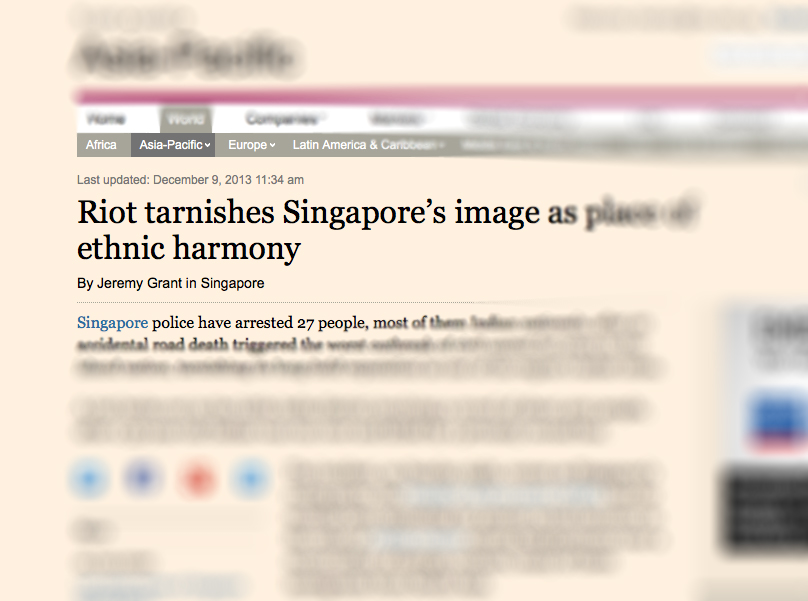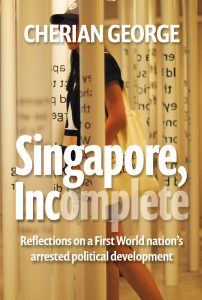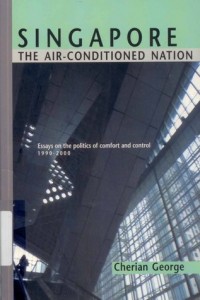FOREIGN MEDIA COVERAGE
Racial riot? Really?
London’s Financial Times headlined its online story “Riot tarnishes Singapore’s image as place of ethnic harmony”. A Forbes Asia blog claimed that the incident “highlights ongoing tensions between the ethnic groups that call Singapore home”. Al Jazeera did not go that far, but hinted at it by presenting data on Singapore’s ethnic mix. And a reporter with a leading global news broadcaster prefaced her request for an interview with me by referring to “racial riots”.
The instinct of some foreign media to frame the Little India Riot as race-related may reveal more about their own prejudices than about the reality of what happened on Sunday evening. It is of course true that ethnic minorities here occasionally face subtle and not-so-subtle discrimination, but it would be a stretch to assume that the riot had much to do with that. The existence of racism doesn’t mean that the racial lens is always the right one through which to view events. If the riot reveals any deeper divisions – and most reasonable Singaporeans know that it does – those divisions are probably ones of nationality and class, not race. Not that this would be a less serious social ill; but it is important to get the diagnosis right if we are to treat it effectively.
A racial explanation of the riot implies that if it had been a crowd of mainland Chinese construction workers who saw one of their countrymen killed by a bus driven by a Chinese Singaporean, and if Chinese Singaporean police and civil defence personnel had arrived at the scene, the absence of the race factor from the equation would have resulted in a peaceful resolution of the situation. One just needs to consider the daily incidence of uprisings among Chinese workers in China to be disabused of such a fiction.
But the misunderstanding is not surprising. After all, if an editor on the other side of the world receives news from majority-Chinese Singapore of a riot breaking out in “Little India” involving only South Asians – what else would he think?
It takes local knowledge to understand that Little India is not an ethnic ghetto in the mould of those in Europe and the United States where riots have broken out in recent decades. Most Indians don’t live there, but (along with other diversity-loving Singaporeans) love visiting it as a cultural haven. It is the place to go for the best Indian food, clothing, groceries and goldsmiths, and its higher than usual concentration of Hindu temples.
Urban geography, not race, explains why the riot was an all-South-Asian affair. On Sundays, Singapore’s hundreds of thousands of migrant workers gravitate to particular neighbourhoods that have evolved organically into gathering spots for the proletariat from different parts of Asia. If a similar incident had erupted in the Beach Road area, it would have been an all-Thai affair. Around Peninsula Plaza, it would have been all-Myanmar. And if a migrant worker riot ever broke out around Lucky Plaza on Orchard Road, you can bet that it would be a Filipina expression of People Power.
Fortunately, Financial Times and company were the exception. Most foreign media reports correctly framed the riot as a by-product of the country’s dependence on low-cost foreign labour and a possible symptom of their discontent. These included international news organisations (Reuters , AFP , AP, the BBC and CNBC) and – critically for Singapore’s relations with India – Indian media such as the Hindu and the Times of India.
A Wall Street Journal blog – written by two local staffers – stated:
“The riot has sparked concerns of festering unrest amid the large foreign workforce, numbering about 1.3 million as of June, in this island state of 5.3 million people. In recent years, some foreign laborers—particularly low-pay unskilled workers in construction—have resorted to protests against alleged exploitation by employers, including a rare and illegal strike last year by about 170 public-bus drivers hired from China.”
The writers understood that the size of the migrant worker population was more relevant to the story than Singapore’s ethnic composition. And, they recognised that the most closely related precedent was not the race riots of the 1960s but the Chinese bus drivers’ strike – which of course destroys the theory that such incidents have much to do with race.
If anything, Singaporeans’ determination to preserve the nation’s multi-ethnic identity is shining through. Ethnic Chinese Singaporean Adrianna Tan, for example, plans to organise a monthly walking tour of Little India to share her love for the neighbourhood. I know some journalists who might find the experience educational.







Sylvain
Fair point, this should not be pictured as different ethnic groups in direct conflict but the underlying problem revolves around the same issue.
Singaporeans benefit from an outstanding quality of life and live in one of the world’s wealthiest nations, yet immigrant workers work in dire conditions and for very small wages. Discrimination starts the moment you apply different standards to different ethnicities OR nationalities, and the Singapore government does so to a large extent.
Add to this the fact that whether they are Indian construction workers, Chinese Bus Drivers, or much wealthier Western immigrants, most of them could relate of racist remarks from Singaporeans during their time in the city state.
So let’s not confuse the wood for the trees, these riots were sparkled by ethnic tensions in the first place, but they could still well be a testimony of these tensions lying not far behind this picturesque cliche of a harmonious society.
Muhd.R
Racism still exist in Singapore. Just look at the rental market with so many ads openly stating that “malays and indian, please excuse”, etc..
Mr. Ran
In recent months, I have noticed that quite a plenty of local Singaporeans (born in Singapore, no matter what the race) standing together when incidents happen involving persons of another nation. We Singaporeans have an identity, an identity that we are Singaporeans no matter what is our race. I have seen many incidents where all the different races stepped together to help someone of a different nation in dire need.
However, much fewer (I really mean significantly fewer) isolated incidents whereby a black sheep (just a black sheep in a flock of good people) of another nation was causing trouble, my fellow countrymen regardless of race came together to condone that single person’s wrongdoings without resorting to any violence or prejudice towards that entire nation.
I cannot say that there are no racism here. There will always be racism everywhere, but the situation of the racism in Singapore is only skin deep. Trust me when I say, if one of my fellow countrymen is being attacked, no Singaporean cares about what is the colour of his skin when they stand in the way to defend him.
Kesamet
Some foreign media were quite wrong to reduce the Little India riot to ‘race’, but class, ethnicity / race, gender really do intersect in this case. If I were to assign two opinion pieces, I would chose this one and the one recently posted by Aware and let students discuss the strengths and weaknesses of these op pieces.